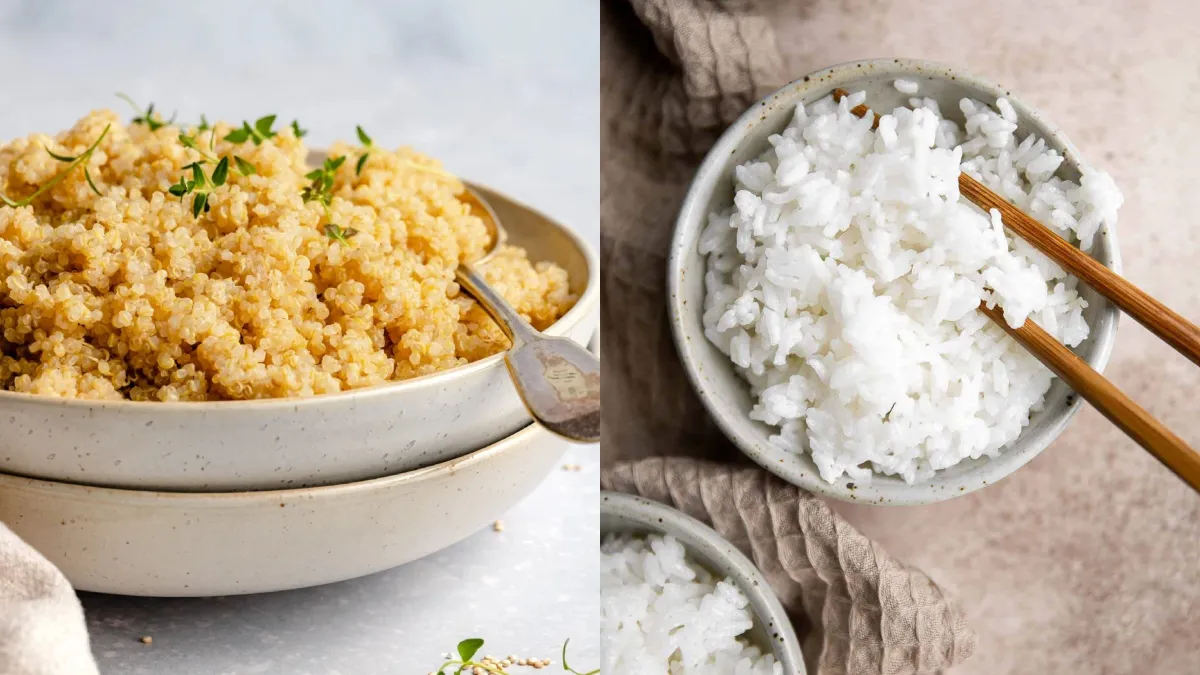When it comes to choosing a staple for a healthy diet, quinoa and rice often emerge as top contenders. Both grains have their unique benefits and can be incorporated into a variety of dishes. However, understanding the health aspects of each can help determine which might be better for your dietary needs. Here, we compare quinoa and rice on five important health aspects and break down the key differences to help you decide which reigns supreme in your diet.
Nutritional content:
Quinoa and rice differ significantly in their overall nutritional profiles. Quinoa, often referred to as a "superfood," is a complete protein, meaning it contains all nine essential amino acids. It is also rich in vitamins and minerals, including magnesium, iron, and zinc. On the other hand, white rice is predominantly composed of carbohydrates with minimal amounts of protein and fat. Brown rice, however, is a whole grain like quinoa and retains more of its natural nutrients, including fibre, vitamins, and minerals. While both quinoa and brown rice offer substantial nutritional benefits, quinoa stands out for its higher protein content and a broader range of nutrients.
Glycemic index:
The glycemic index (GI) measures how quickly foods raise blood sugar levels. Foods with a high GI can cause rapid spikes and drops in blood sugar, which can be detrimental to those managing diabetes or insulin resistance. Quinoa has a lower glycemic index compared to white rice. This means quinoa provides a more gradual release of energy, helping to maintain stable blood sugar levels. White rice, especially the refined variety, has a higher GI, which can lead to quicker spikes in blood glucose levels, potentially increasing the risk of developing type 2 diabetes over time.
Protein content:
Protein is crucial for muscle repair, enzyme function, and overall cellular health. Quinoa stands out in this category, containing about 8 grams of protein per cup, and it is a complete protein source, meaning it provides all nine essential amino acids. This is particularly beneficial for vegetarians and vegans who might struggle to get complete proteins from their diet. White rice, on the other hand, contains only about 4 grams of protein per cup and lacks several essential amino acids, making it a less optimal choice for protein intake.
Dietary fibre:
Dietary fibre is essential for digestive health, helping to maintain bowel regularity and prevent constipation. Quinoa is a rich source of dietary fibre, offering about 5 grams per cup. This high fiber content aids in digestion, promotes satiety and can help in weight management. White rice contains significantly less fibre, approximately 1 gram per cup, which means it is less effective at promoting digestive health and satiety. This lower fibre content also means white rice can contribute to quicker hunger pangs after eating.
Essential vitamins and minerals:
Quinoa is a powerhouse of essential vitamins and minerals. It is particularly high in magnesium, iron, and potassium, all of which play critical roles in bodily functions such as muscle contraction, oxygen transport, and maintaining proper heart function. Additionally, quinoa contains notable amounts of B vitamins, which are important for energy metabolism. White rice, in contrast, is often stripped of these nutrients during the milling process, although some of them are added back into enriched white rice. Despite this enrichment, the nutrient profile of white rice remains inferior to that of quinoa, making quinoa the more nutrient-dense choice.
While both quinoa and white rice can be part of a healthy diet, quinoa generally offers superior health benefits. It provides more protein, fibre, and essential nutrients, and has a lower glycemic index compared to white rice. For those seeking to enhance their nutritional intake, support digestive health, and maintain stable blood sugar levels, quinoa emerges as the healthier choice. White rice, while not without its benefits, is better consumed in moderation, especially for individuals concerned about blood sugar management and nutrient density.
ALSO READ: Agave vs Honey: Which is healthier?

